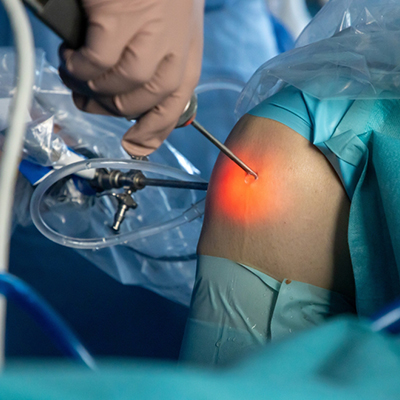Benefits of Arthroscopy: Minimally Invasive Joint Surgery
Arthroscopy is an innovative surgical technique that is used to not just diagnose but also treat issues of the joint. It involves the insertion of a small, flexible tube with a camera (arthroscope) through a small incision in the skin. This allows Best Arthroscopy Surgeon in Vijayawada to view the interior of a joint, such as the knee, hip, shoulder, or ankle, on a monitor in real time. Arthroscopy can help identify problems like torn ligaments, cartilage damage, and joint inflammation. In addition to diagnosis, it offers therapeutic options; surgeons can repair or remove damaged tissues, such as cartilage or loose bodies, without the need for larger incisions associated with traditional surgery. Benefits of arthroscopy include reduced pain, quicker recovery times, and minimal scarring. Patients typically experience shorter hospital stays and can often return to normal activities more quickly than with open surgery. Overall, arthroscopy has revolutionized orthopedic care, providing effective solutions for many joint-related conditions.
How is arthroscopy done ?

Arthroscopy is a minimally invasive surgical procedure used by Arthroscopy Doctors in Vijayawada for diagnosing and treating joint issues. The process begins with the application of anesthesia, which may be general or local, depending on the extent of the surgery. The surgeon makes small incisions around the affected joint, typically the knee, shoulder, or ankle, and inserts an arthroscope—a thin tube with a camera that provides a clear view of the joint's interior on a monitor. This visualization allows the surgeon to assess the joint's condition, identify any abnormalities, and, if necessary, perform repairs using specialized instruments also inserted through small incisions. Common procedures performed by best orthopedic surgeon in vijayawada include removing damaged cartilage, repairing ligaments, or smoothing joint surfaces. After the surgery, patients often experience less pain and a quicker recovery compared to traditional open surgeries. Rehabilitation typically follows, focusing on restoring mobility and strength. Overall, arthroscopy offers a less invasive option for joint care, promoting faster healing and fewer complications.
How arthroscopy helps in knee?
- Meniscus Tear Repair: Arthroscopy is used to repair or remove torn meniscus cartilage.
- Ligament Reconstruction: It facilitates the reconstruction of damaged ligaments, such as the anterior cruciate ligament (ACL).
- Cartilage Restoration: Surgeons can address cartilage damage through microfracture techniques or other restorative procedures.
- Removal of Loose Bodies: It allows for the removal of loose fragments of bone or cartilage within the joint.
- Synovial Biopsy: Arthroscopy can be used for obtaining tissue samples for diagnostic purposes.
- Chronic Knee Pain Management: It helps identify underlying causes of persistent knee pain.
- Joint Debridement: The procedure cleans out debris and inflamed tissue from the joint.
- Plica Removal: Arthroscopy can remove plica, a fold in the lining of the knee that can cause pain.
- Baker's Cyst Treatment: Addressing fluid-filled cysts behind the knee is also feasible.
- Assessment of Joint Conditions: It aids in evaluating various knee conditions, guiding further treatment decisions.
How arthroscopy helps in the shoulder as per Orthopedic doctor in Vijayawada ?
- Rotator Cuff Repair: It is commonly used to repair torn rotator cuff tendons.
- Labral Repair: Arthroscopy can restore the stability of the shoulder by repairing the labrum, which may be damaged from injuries or wear and tear.
- Subacromial Decompression: This procedure alleviates shoulder pain by removing bone spurs or inflamed tissue under the acromion.
- Shoulder Stabilization: It helps in treating recurrent shoulder dislocations by tightening the ligaments and repairing any damage.
- Loose Body Removal: Arthroscopy allows for the removal of loose cartilage or bone fragments that cause pain and mobility issues.
- Biceps Tendon Repair: It can be used to repair a torn biceps tendon anchored to the shoulder joint.
- Adhesive Capsulitis Treatment: Shoulder arthroscopy can help treat frozen shoulder by releasing tight tissues.
- Assessment of Joint Conditions: It allows for direct visualization and diagnosis of various shoulder conditions.
How arthroscopy helps in the hip ?
- Labral Repair: Repairing or reconstructing the hip labrum, which can be damaged due to injury or degeneration.
- Femoroacetabular Impingement (FAI): Treating bone abnormalities causing pain and limited movement in the hip.
- Chondral Repair: Addressing cartilage damage to improve joint function and reduce pain.
- Hip Joint Infection: Diagnosing and treating infections within the hip joint.
- Loose Bodies Removal: Removing fragments of bone or cartilage that cause joint irritation.
- Synovectomy: Removing inflamed synovial tissue in cases of arthritis.
- Bursa Removal: Addressing issues related to hip bursitis by removing or repairing affected bursae.
- Staging for Other Conditions: Assessing the hip joint before other surgeries like total hip replacement.
Why is arthroscopy the future of orthopaedics ?
- Minimally Invasive: Smaller incisions reduce tissue damage and promote quicker healing.
- Faster Recovery: Patients typically experience less pain and shorter rehabilitation times.
- Accurate Diagnosis: Allows for direct visualization of joint issues, leading to precise diagnosis.
- Effective Treatment: Enables simultaneous treatment of various joint conditions during the procedure.
- Reduced Scarring: Smaller incisions result in minimal scarring compared to open surgeries.
- Lower Risk of Infection: Fewer risks due to smaller surgical openings.
- Day Surgery: Often performed as outpatient procedures, allowing patients to return home the same day.
- Improved Range of Motion: Many patients regain mobility faster post-surgery.
- Enhanced Visualization: Provides clear views of joint structures for better assessment and intervention.
- Customized Care: Surgeons can tailor interventions based on real-time findings during the procedure.
For more information on Arthroscopic Surgery in Vijayawada , feel free to walk in or contact Dr. Shanmukh Tumati, one of the leading bone and joint doctor in Vijayawada for more information.
Have any Query or Need more Information
